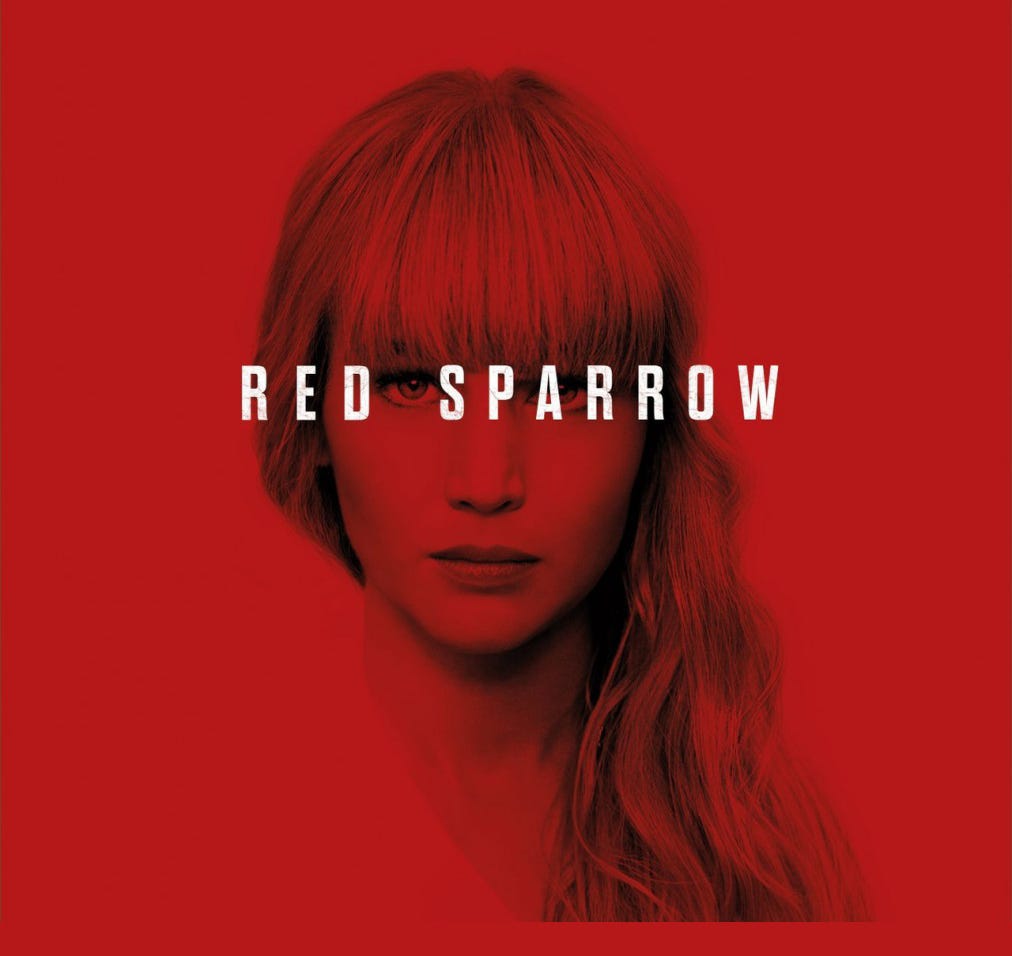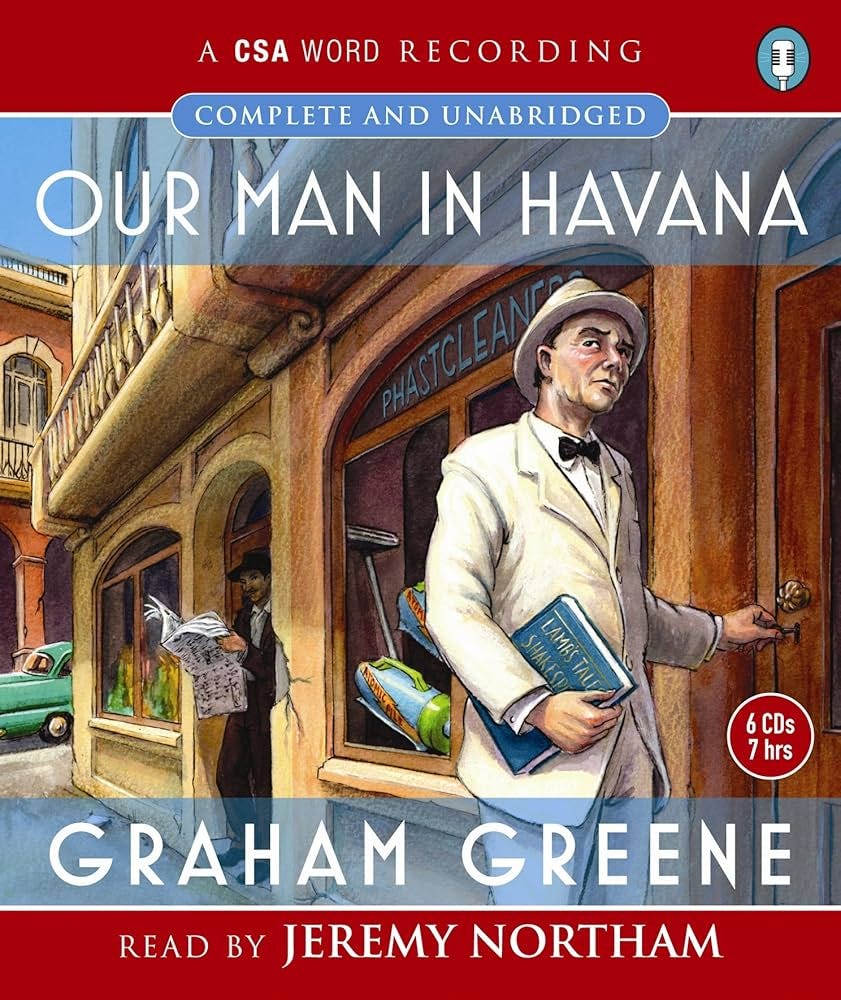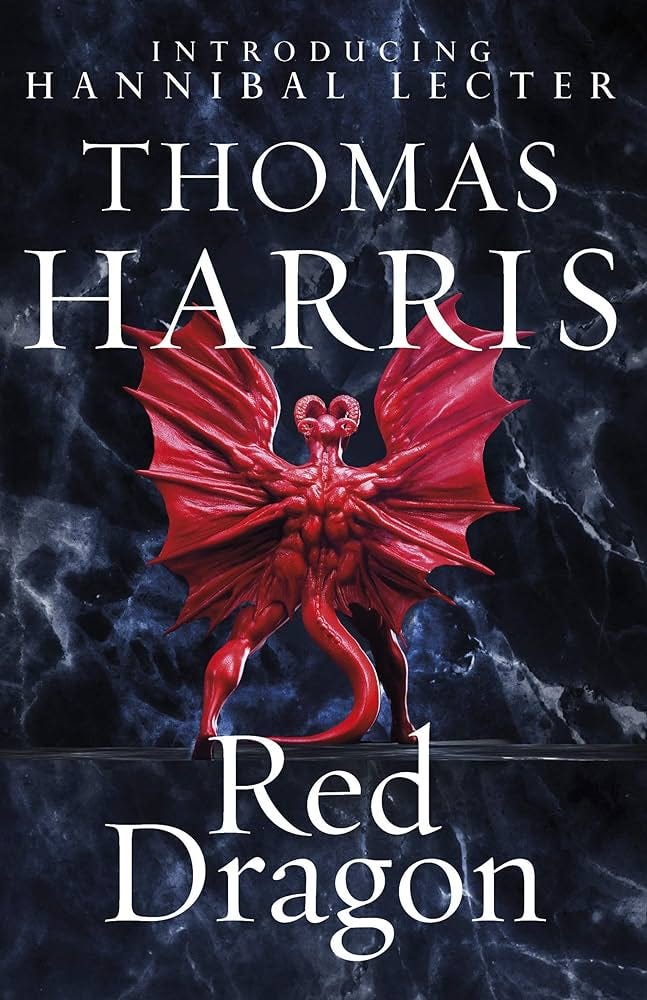A RED SPARROW FROM OUT OF THE BLUE
Very few of today’s bestselling thrillers are like bolts from the blue, books that come from previously unknown authors and manage to become hugely successful without much in the way of prepublication fanfare. For better or worse (usually the latter), most of the thrillers on contemporary bestseller lists come from the usual suspects, writers such as John Grisham, Stephen King, Vince Flynn, David Baldacci, and the dreaded James Patterson. This wasn’t always the case. The bestselling thriller of 1971 was The Exorcist, written by William Peter Blatty, whose previous four novels (Which Way to Mecca, Jack?; John Goldfarb, Please Come Home!; I, Billy Shakespeare; and Twinkle, Twinkle, “Killer” Kane) were so underwhelming that even the success of The Exorcist (the second bestselling novel of 1971) couldn’t resurrect their fortunes. Blatty lived for another 46 years and published a few more novels, including a sequel (of sorts) to The Exorcist, but he never again came close to producing anything as successful, both commercially and artistically, as The Exorcist. That book was a genuine bolt from the blue. You could say something similar about Nicholas Meyer’s 1974 bestseller The Seven-Percent Solution, which was a massive bestseller and ignited a huge vogue for Sherlock Holmes pastiches. Meyer followed it up with three more Sherlock Holmes pastiches and a few other books, but he never again produced a book as successful as The Seven-Percent Solution. The year 1974 also brought us Peter Benchley’s debut novel Jaws, the third bestselling novel of the year. It was another debut from the blue. Benchley, unlike Blatty or Meyer, produced a few more monster bestsellers, such as 1976’s The Deep and 1979’s The Island, but nothing he wrote after Jaws ever had the same cultural cache as his debut novel. I point these facts out not to denigrate Blatty, Meyer, or Benchley but simply to show how different the pop-fiction landscape was back in the day. Back in the 1960s and 70s, every year seemed to bring a monster bestseller – Rosemary’s Baby, The Andromeda Strain, The Day of the Jackal, Jonathan Livingston Seagull, The Thornbirds, Watership Down, Ragtime, The Red Dragon, etc. – from an author with very little previous public exposure. Nowadays, it seems much more difficult for a bestselling thriller to arise from out of nowhere. It still happens – Gone Girl, The Girl With the Dragon Tattoo, The Girl on the Train – but only if you insert the word “girl” in the title and only rarely.
Back in 2013, author Jason Matthews managed to produce a bolt from the blue with his first novel, Red Sparrow (sorry to mix my color palette so garishly). At 62 years old, he was an unlikely debut author. But he had an advantage over many other would-be thriller writers; he had spent 33 years working for the CIA. In a 1981 study called Bestsellers: Popular Fiction of the 1970s, scholar John Sutherland identified a genre of fiction that rose to prominence in the 1970s and 1980s, which he called “institutional fiction.” He was referring to novels written by people with an insider’s knowledge of a particular walk of life. These included the cop novels written by Joseph Wambaugh, who had spent fourteen years with the LAPD, the medical thrillers of Michael Crichton and Robin Cook, both of whom were Harvard-educated medical doctors, and the sports novels of Peter Gent, who spent five years as a wide receiver in the NFL. Later examples would include the legal thrillers of Scott Turow and John Grisham, both of them practicing lawyers, and the forensic-crime thrillers of Patricia Cornwell, who had worked for six years in the office of the Chief Medical Examiner for the State of Virginia. Jason Matthews follows in this tradition. He is far from the only former spy to become an author of bestselling espionage thrillers. Ian Fleming, John Le Carre, Graham Greene, Frederick Forsyth, Charles McCarry and many other successful authors of spy novels once worked as real spies. I would guess that, among that group, Frederick Forsyth was probably Matthews’s favorite. Not only did his book remind me a lot of Forsyth’s work, but a major character in the novel is called Forsyth. But Red Sparrow isn’t a cheap Forsyth knockoff. It is has its own vibe, its own unique style. For one thing, all but the last of its 42 chapters end with a recipe for some mouthwatering dish. Food and espionage are not exactly strangers to each other. Len Deighton was a food writer before he became a spy novelist. But spy novels rarely have full recipes in them, let alone 41 of them. Spies tend to travel quite a bit, so they partake of a wide variety of meals. The recipes in Red Sparrow are culled from numerous culinary traditions, including Russian, Greek, Turkish, Afghan, Indian, Italian, and French. Novels with recipes in them aren’t that unusual. But most of them are cozy mysteries with titles like The Chocolate Chip Cookie Murders. There is nothing cozy about Red Sparrow. It contains scenes of grisly violence and blush-inducing sexual detail.
The recipes aren’t the only unexpected touch. Plenty of British spy novels – Our Man in Havana, The Human Factor, Slow Horses, the James Bond novels – are chock full of humor. American spy novels tend to be sort of grimly earnest and lacking in laughs. That is not the case with Red Sparrow. While not as funny as Our Man in Havana, the book has plenty of humor, most of it by Russians and about Russia. Some of these are straight up jokes, the kind that might be delivered by a Las Vegas comedian. One Russian tells her friend about “two girls buying sausage. The butcher has no change so he gives them an extra sausage. ‘What are we going to do with the third sausage?’ whispers one girl. ‘Quiet,’ her friend says. ‘We’ll eat that one.’”
Oftentimes humorous thrillers tend to be funny but not that thrilling. But Red Sparrow is incredibly thrilling. It is also incredibly smart. Matthews knows his tradecraft better than almost any other spy writer who ever lived – perhaps better than all the others. John Le Carre, Graham Greene, Ian Fleming – those chaps each spent a few years working as actual spies before leaving the trade to become full-time novelists. But Matthews spent 33 in the CIA. His wife was also a career CIA employee. Between the two of them they amassed about six decades of insider knowledge of how international espionage works. And it informs nearly every page of Red Sparrow.
The title character is Dominika Egorova, a beautiful young Russian woman who is trained by Russia’s intelligence services to operate as a “red sparrow,” essentially a woman who acts as a honey trap to lure enemies of the state into exposing their secrets. But as far as Dominika is concerned, red sparrows are little better than whores. She longs to be a real spy working out in the field, going undercover in a foreign land, just like the men of the KGB. Eventually she gets her wish – sort of. The Russian intelligence chiefs send her to Helsinki with instructions to cultivate an acquaintance with Nate Nash, an attractive young CIA man who is working in the American embassy there, purportedly as a trade specialist (nobody believes this cover story). Nate was transferred to Helsinki only recently. Before that he was in Moscow where he is believed to have turned a high-ranking member of Russian’s intelligence community into an American asset. The Russians want Dominika to find out which high-ranking spy Nate managed to turn into a double agent. So Dominika goes to Helsinki, where she eventually meets and…becomes friendly with Nate Nash. For awhile, he subtly tries to turn her into an American asset while she tries to turn him into a Russian one, or so it would seem. To give away much more of the plot would be unfair. The characters in this book are well-drawn but not in the same league as Mick Herron’s Jackson Lamb or Le Carre’s George Smiley. The numerous foreign milieus are also well drawn but not amazingly so. What sets this novel apart from 99 percent of the spy novels published in any given year is the inventiveness and propulsiveness of Matthews’s ingenious plot. It involves plenty of spies and counterspies. It involves a lot of clever espionage ruses, such as the “canary trap.” It involves a U.S. Senator from California, a Democrat and a female who is on the rise and is considered to be a likely vice-presidential candidate at some point in time. That, however, is as far as the comparisons to Kamala Harris go, however (I hope). This California Senator has some extremely compromising secrets which, if exposed, would put an end to her meteoric political rise.
Jason Matthews and his career remind me a bit of Thomas Harris and his career. Harris’s breakout book was 1981’s Red Dragon; Matthews’s was Red Sparrow (neither author employed the article “the”). Red Dragon was the first of a four-book series (so far) about a highly-cultured killer. Red Sparrow was the first of a three-book series about a highly-cultured killer (Dominika is a former ballerina). In Red Sparrow, Matthews directly references Hannibal Lecter, the main character in the trilogy that began with Red Dragon. Harris produced his last Hannibal Lecter novel in 2006, when he was 66. Matthews produced his last Dominika Egorova novel in 2018, when he was 67. Neither author has been especially prolific. Harris has produced six novels over the course of a 49-year career that began with Black Sunday, published in 1975. Alas, Matthews’s publishing career began in 2013 and ended in 2018. He died of a rare brain disease in 2021, at the age of 69. He left behind only the three novels in the Red Sparrow trilogy. I haven’t yet read books two (Palace of Treason) and three (The Kremlin’s Candidate) in the series, but I am looking forward to them. American writers have produced plenty of great private eye novels and cop novels and serial-killer thrillers and mafia novels and other genres of crime thrillers. But when it comes to spy novels, our British cousins seem to do it so much better than we do. There are only a small number of American spy thrillers that I would say are the equal of Frederick Forsyth’s best books. Red Sparrow is one of them. I wish Jason Matthews had lived long enough to write a dozen more. But, apparently, he didn’t want to begin a writing career until he had completed his spying career. That was probably a wise thing to do. As one character tells another in Red Sparrow: “In Russia we have a saying – chase after two rabbits and you won’t catch even one.” Matthews didn’t pursue the rabbit of literary success until he had already made a success of his espionage career. He is that rare person who caught both of his rabbits. I hope he rests in peace.







